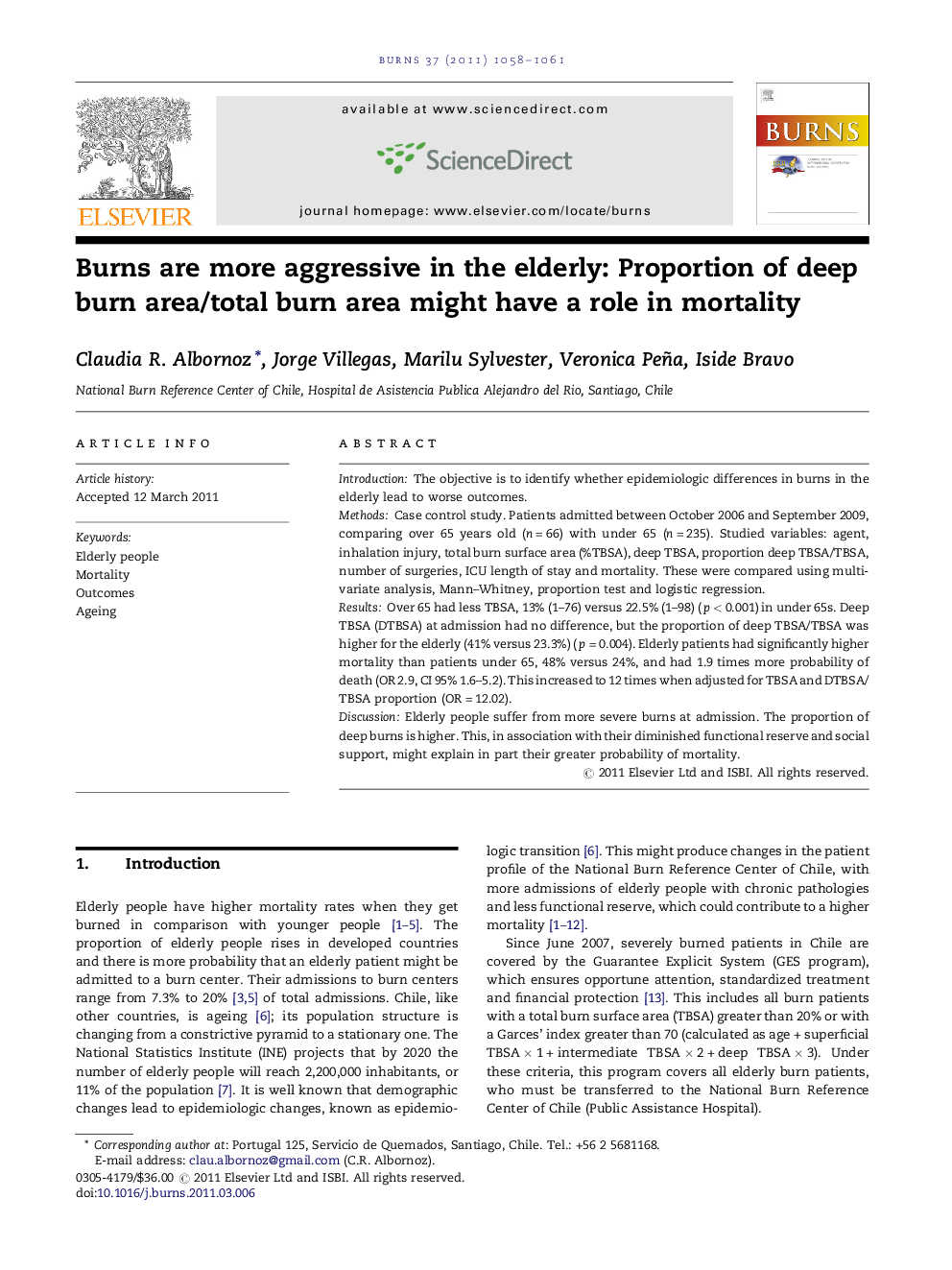| Article ID | Journal | Published Year | Pages | File Type |
|---|---|---|---|---|
| 3105354 | Burns | 2011 | 4 Pages |
IntroductionThe objective is to identify whether epidemiologic differences in burns in the elderly lead to worse outcomes.MethodsCase control study. Patients admitted between October 2006 and September 2009, comparing over 65 years old (n = 66) with under 65 (n = 235). Studied variables: agent, inhalation injury, total burn surface area (%TBSA), deep TBSA, proportion deep TBSA/TBSA, number of surgeries, ICU length of stay and mortality. These were compared using multivariate analysis, Mann–Whitney, proportion test and logistic regression.ResultsOver 65 had less TBSA, 13% (1–76) versus 22.5% (1–98) (p < 0.001) in under 65s. Deep TBSA (DTBSA) at admission had no difference, but the proportion of deep TBSA/TBSA was higher for the elderly (41% versus 23.3%) (p = 0.004). Elderly patients had significantly higher mortality than patients under 65, 48% versus 24%, and had 1.9 times more probability of death (OR 2.9, CI 95% 1.6–5.2). This increased to 12 times when adjusted for TBSA and DTBSA/TBSA proportion (OR = 12.02).DiscussionElderly people suffer from more severe burns at admission. The proportion of deep burns is higher. This, in association with their diminished functional reserve and social support, might explain in part their greater probability of mortality.
